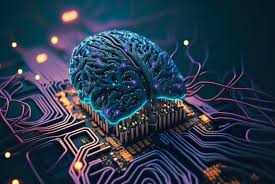
The future of the Tech Industry is quickly changing, with new businesses and technologies emerging all the time to populate it. To take a quick glimpse into what this might look like, let’s look at what some of these leaders in the industry are doing differently to shape their futures.
- Artificial Intelligence
As a concept and for corporate use, Artificial intelligence is no longer science fiction. Companies are now using artificial intelligence to enhance their products and services. One application of this technology allows computers to “learn” based on previous user data and the specific situations in which they are used. This software can identify minute changes in user behavior over time (i.e., when people give up an action or item and how long it takes them to return it). Artificial intelligence is now being used for things like:
- Customized advertising
- Automatic updates
- Customer service automation
- Cashiering systems
- Digital assistants (applications that act as digital assistants)
- The Internet of Things
The Internet of Things is a system that connects objects or devices (both inside and outside the home) using an existing network. These objects are connected via wireless technology and can act as a hub for each other. This forms what’s known as the “smart home.” This can be many small things (gadgets, lights, small appliances) integrated into one system that connects to mobile devices, allowing users to control them all through their smartphones. Everything connected via the internet can potentially be controlled from anywhere. The Internet of Things can be applied to what is known as the “smart city,” in which all homes, businesses, and public spaces are connected in one massive network. This can provide real-time information on traffic patterns, weather forecasts and other events that might affect travel times (i.e., snowstorms).
- Computer Vision
Computer vision is a technology that allows computers to change inputs into actionable data through machine learning algorithms. Artificial intelligence is used to identify and interpret data based on images. This technology is mostly used in the creation of self-driving cars. Such vehicles use computer vision to detect road signs, pedestrians and other objects to avoid accidents.
- Augmented Reality
Augmented reality (AR) refers to the use of technology to add on or overlay digital information onto a user’s view of the real world. Unlike virtual reality (which creates an artificial world for users), AR adds only additional digital information. This form of technology also requires a new type of display, in which the camera used to view the real world can be adjusted enough to show digital information over it. The growth of AR is relatively new, and there are currently no smartphones capable of displaying this technology. The first applications for AR are in gaming, advertising and marketing.
- The Internet of Everything
The Internet of Everything (IoE) is a term used to describe the network of physical objects that can be controlled through the internet. This term covers a wide range of new tech, from cars to coffee machines and everything in between. For something to be considered “smart,” it must have an internet connection and transmit data relating to its location or activity. The data transmitted may include the proximity to other sensors and functions and instructions on how to act in certain scenarios. IoE allows the control of multiple devices by using various communication methods, such as Bluetooth and Wi-Fi. All connected devices would work together to form one smart home or smart city.


